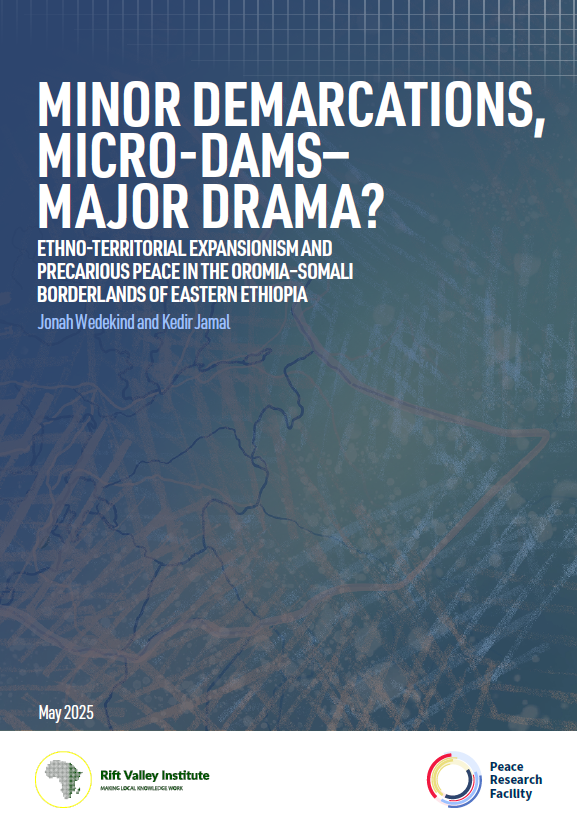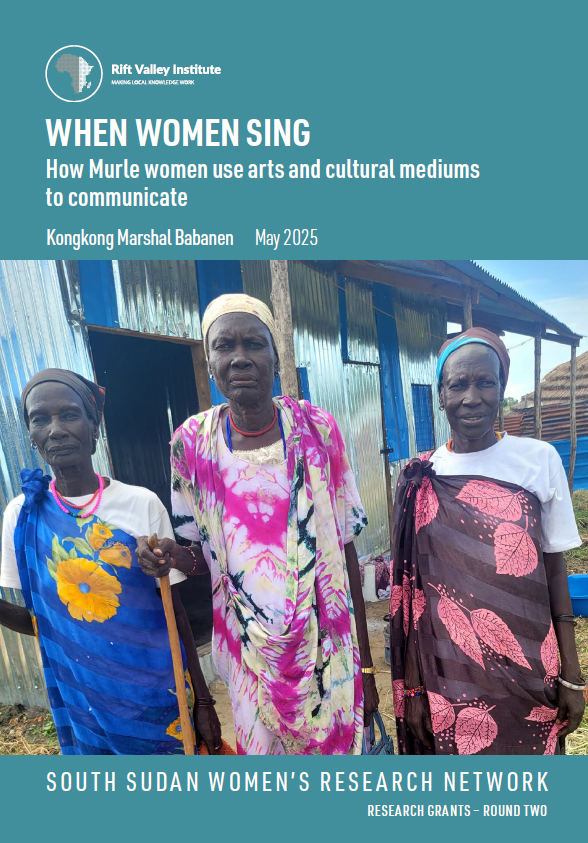This blog post was written by Alden Young and Naomi Pendle, the Co-Directors of Studies for the Rift Valley Institute’s Sudan and South Sudan Course, which will be taking place in Ethiopia from 24-28 June 2019. Alden and Naomi will be joined by a team of leading specialists to explore the contemporary complexities of the region as well as the gamut of social, economic, political and security trends, drawing on deep history and local knowledge to inform debate and discussion. The courses are designed for policy-makers, diplomats, investors, development workers, researchers, activists and journalists—for new arrivals to the region and those already working there who wish to deepen their understanding.
Negotiating peace and transitions
Over the last year, there have been several momentous and largely unpredicted changes in Sudan and South Sudan. In Sudan, after 30 years in power, Omar al-Bashir was ejected from the presidency following months of popular protests. This triggered an on-going re-ordering of the country’s political system with the outcome as yet unknown. In South Sudan, after five years of stop-start war, an elite peace deal was reached in June 2018—brokered by President Bashir—between President Salva Kiir’s government and opposition leader Riek Machar’s Sudan People’s Liberation Movement-In Opposition (SPLA-IO). The deal has lasted for a year and brought a significant and prolonged decline in fighting, but no long-term resolution of the country’s political problems. In the last year, both countries have generated the unusual images of civilians dancing and celebrating with military personnel, who are more normally seen as feared oppressors and war-makers. This being said, the extent to which these recent events signal the start of more long-term positive social and political changes is unclear.
The Fall of Bashir
The removal of President Omar al-Bashir in April 2019 was the result of country-wide protests that began in January 2018. These were a response to a deteriorating economic situation in Sudan, particularly the precipitous decline in the value of the dollar and sharp rises in the price of bread, medicine and fuel. While the government was acutely aware of the country’s economic weakness, it was unable to prevent further decline. Its attempts to address the crisis, including by seeking sanctions relief from the US and contesting the corrupt private monopolies in the country, had little positive impact.
The protests, which escalated in early April 2019 with a mass sit-in outside the military headquarters in Khartoum, culminated in a military coup carried out by Bashir’s own generals. Not only was Bashir removed from power, but the ruling political party, the National Congress Party (NCP), was also disbanded. This has left the Transitional Military Council (TMC) in temporary control of the country and a complicated process of negotiations underway to determine its longer-term successor.
Negotiating a Political Future
For thirty years, Bashir had been one of the central pillars of Sudanese politics, mediating between the security services and armed forces, the Islamist Movement, rural notables, the business community and major regional and international powers. His departure has created space for new political forces to emerge, which are influencing the direction of the political landscape. These include popular, anti-Bashir groups—notably, the Sudanese Professionals Association and the Alliance for Freedom and Change—and also newly powerful security actors, principally the Rapid Support Forces (RSF) militia, under the leadership of Mohamed Hamdan Daglo ‘Himeidti’.
With the backing of his own private army, Himeidti has risen to be deputy leader of the TMC and a key power-broker in the transition. However, the RSF also carries the stigma of its involvement in the government’s violent counterinsurgency campaigns, particularly in Darfur. The protest movement must decide the extent to which it can achieve an accommodation with the powerful security forces, and address the crimes that many have committed, whilst safeguarding a peaceful transition to civilian rule and the marginalization of Islamist forces.
At the time of writing, General Abdel Fattah al-Burhan remains the head of the TMC after having taken over from its first leader, the former Defence Minister, General Awad Ibn Ouf. Burhan came to power with a mandate to find a negotiated settlement with the protestors. Talks have continued between the military and the Alliance for Freedom and Change on the structure, powers and duration of a transitional government. Both sides recognize the need to accommodate the other, but the struggle to work out the details of power-sharing has only increased the sense of frustration in the country.
The internal political process is also being shaped by the involvement of outside actors—principally the Gulf states and Egypt—which will use their influence over the military leadership and Himediti to protect their own interests in post-Bashir Sudan. They are offering financial support both directly to the central government in Khartoum and to the security services. They have also made clear that they expect their regional priorities such as Sudan’s continued participation in the war in Yemen to be beyond democratic control.
Another elite deal in South Sudan
In South Sudan, decades of war, combined with the monetarization of politics, has produced a patchwork of armed forces and self-defense groups whose alliances are fluid. In December 2013, the SPLA-IO brought together various anti-government forces—the composition of which has fluctuated over time—to fight the government. Since the outbreak of the war, IGAD, US, UK, Norway and the UN have all tried to force the parties into a peace deal. However, the protagonists never accepted the fundamental terms and did not pause the fighting.
In June 2018, Khartoum brokered a deal between the South Sudanese government and SPLA-IO. As well as Bashir, Salah Gosh—then chief of Sudan’s National Intelligence and Security Service and an experienced political operator—was part of these efforts. Behind closed doors, a small elite cohort agreed that the warring parties would cease hostilities and that the oilfields to the west of the Nile would be reopened, which would benefit the ailing economies of both Sudan and South Sudan. Both Bashir and Gosh, the deal’s main architects, have now fallen from power.
While June 2018 marked an end to active fighting between the government and SPLA-IO, the deal represented continuity of sorts in South Sudanese politics: peace and war remained in the hands of a political-military elite. The peace deal was not a response to growing popular fatigue with war or the humanitarian suffering it has brought, but instead an entrenching of elite power. Three months after the June 2018 deal, a detailed, extensive document was signed that amended the 2015 Agreement on the Resolution of Conflict in South Sudan (ARCSS) and prescribed a plethora of new political arrangements. This Revitalized-ARCSS offered a semblance of legitimacy and a useful framework under which peace could be morally accepted. Despite the reduction in fighting with the SPLA-IO, the government has launched significant military offensives against groups which failed to sign R-ARCSS, notably the Equatorian armed group, the National Salvation Front.
The international community was perplexed by the sudden signing of the peace deal. The UK, US, Norway and EU initially distanced themselves from the agreement, but as the deal has lasted, they have been forced to engage with it. The signing of the agreement brought a surge of concern from within the humanitarian community about the prospect of thousands of people returning to their homes from exile or from protection of civilians sites. While some people have returned, the majority have not. This follows historic patterns, seen after previous conflicts, where families took years to plan and complete their return to homes areas.
While violence has generally remained suppressed since the signing of R-ARCSS, the passing of the deadline for the formation of a transitional government, and disagreements over security arrangements in Juba if Riek Machar eventually returns, make long-term peace seem less likely. The deal will come under more strain as peace agreement deadlines are missed and avoided.
In addition, the scale of changes in Sudanese politics, and their implications for Southern peace, remain ambiguous. Yet, just a couple of weeks after Bashir was removed from power in Sudan, President Salva Kiir visited the UAE, suggesting the potential for direct Gulf involvement in South Sudan, which could make up for the lack of focused Sudanese involvement. If the South Sudan government sees a chance to achieve an outright military victory, war in the name of peace also remains possible.
The upcoming year in both of the Sudans remains uncertain. While in Sudan and South Sudan there are glimmers of political settlements that could reduce the militarization of each country’s politics, events both internally and regionally appear to be conspiring to forestall democratic transitions. Moving forward, the central challenge in both Sudan and South Sudan is to reduce the role of the security services in politics and to create possibilities for civilians to participate in democratic governance.


